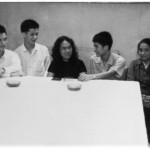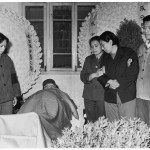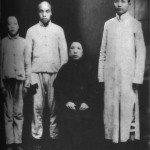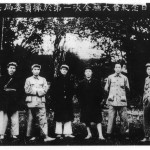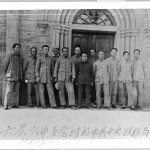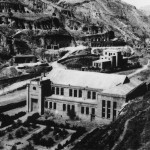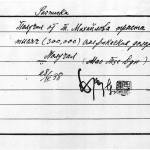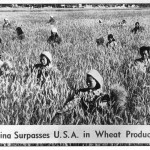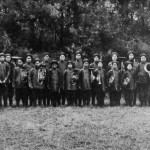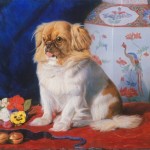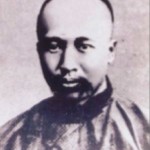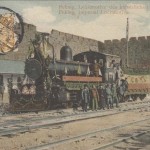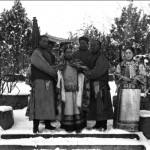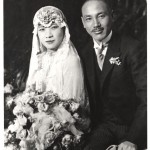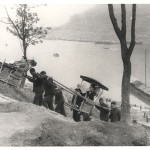Images
CBE for Services to Literature and to History

Jung receiving her CBE for services to literature and to history, 20/03/2024. Photo by Andrew Matthews/PA Wire
Author photos
- Woman's Hour BBC Radio 4 - September 2025
- Jung Chang, May 2025
- Photo by: Hubert Cecil
Taken at, 'An Evening with Professor Sir Magdi Yacoub and Professor Jim Al-Khalili - In Memory of Lord Gowrie.'
Hosted by: The Magdi Yacoub Institute.
- Jung Chang in Rome 2024
- Jung Chang in her street 2023
- At the book launch of Big Sister, Little Sister, Red Sister 17.10.19. Photo by Urszula Soltys
- Photo by Jon Halliday
- Photo by Ben Gold
- Jung Chang in 2017
- Photo by Zhang Xiao-hong
- Photo by Zhang Xiao-hong
- Photo by Zhang Xiao-hong
- Author Jung Chang signs copies of her books for visitors of the Storymoja Hayfestival 2012, Nairobi, Kenya.
- Jung at the gates of the Forbidden City (Photo by Jon Halliday)
- Photo by Makoto Kuwata
- Jung Chang & Jon Halliday (photo by Lisa Weiss)
- Jung Chang in English Countryside 2014
- Photo by Peter Simpkin
- Jung Chang and her mother.
- Jung Chang & Jon Halliday in the Albanian archive.
Illustrations from Wild Swans – Three Daughters of China
- My grandfather, General Xue Zhi-heng, chief of police in the warlord government in Peking, 1922-1924.
- My mother (left) with her mother and stepfather, Dr Xia; Jinzhou, c. 1939. Standing Centre is Dr Xia's second son, De-gui, the only member of his family who approved of Dr Xia's marriage to my grandmother. Dr Xia's eldest son shot himself in protest. Standing far right is De-gui's son.
- Dr Xia
- My mother as a schoolgirl, aged thirteen, in Manchukuo, 1944.
- Cousin Hu, my mother's first boyfriend. On the back of the photo is a poem he wrote:
Wind and dust are my companions,
The end of the earth is my home.
- The Exile
After Cousin Hu was bought out of prison by his father in 1947, he gave this photograph to a friend and asked him to give it to my mother, so that she would know he was alive. Because of the siege, the friend did not see my mother until after the Communists had taken Jinzhou; seeing her in love with my father he decided not to give her the photo. He only passed it to her after a chance meeting in 1985; it was then that she learned that Cousin Hu had died in the Cutltural Revolution.
- My grandmother's sister Lan and her husband 'Loyalty', with their baby son shortly after 'Loyalty' joined Kuomintang intelligence, Jinzhou, 1946.
- Communist soldiers walking below Kuomintang slogans on one of the city gates which survived the siege of Jinzhou, 1948.
- Painting slogans on the soles of 'liberation shoes' during the civil war - 'Safeguard Our Land' (left) and 'Beat Chiang Kai-shek'.
- Communist forces attacking Jinzhou, October 1948.
- My parents in Nanjing, the former Kuomintang capital, en route from Manchuria to Sichuan, a few days before my mother's miscarriage of her first child, September 1949. They are both wearing Communist army uniforms.
- My parents (back), with my grandmother (left) holding Xiao-hong and my wet nurse (holding me), shortly after we arrived in Chengdu, autumn 1953.
- My grandmother holding me (aged two with ribbons in hair) and Jin-ming; my mother holding Xiao-hei, Xiao-hong standing. Chengdu, late 1954.
- My father, in a photograph which I think catches his mood paritcularly well, during the journey from Manchuria to Sichuan, late 1949.
- My mohter making a speech, Chengdu.
- Aged six.
- My mother with (from left) Xiao-hong, Jin-ming, Xiao-hei, and me, Chengdu, early 1958. This photograph was taken in a hurry for my father to bring with him to Yibin to show his mother, who was gravely ill. Signs of haste show in my mother's hair, which has not been brushed down, and in the handkerchief still pinned (as was customary for young children) to Jin-ming's sailor suit.
- With Xiao-hong (left), Xiao-hei (behind), and Jin-ming (right), at the annual Chengdu flower show, 1958. Soon after this photograph was taken famine struck. My father was constantly away in the countryside, so for several years there were no family photographs.
- On Tianamen Square, Peking, as a Red Guard (front, second from left), with friends and air force officers (including one woman) assigned to train us. I am wearing a Red Guard armband, my mother's 'Lenin jacket', and patched trousers to look 'proletarian'. We are all holding the Little Red Book in a standard posture of the time. November 1966.
- The last photograph of my father before the Cultural Revolution, spring 1966.
- My father in the camp at Miyi, with Jin-ming, late 1971, just after the death of Lin Biao.
- My mother in her camp at Buffalo Boy Flatland, in front of a field of corn she helped plant, 1971.
- My grandmother's brother Yu-lin with his wife and children in front of the house they had just built for themselves after ten years' exile in the country, in 1976. It was then they decided to get in touch with my grandmother aftewr a decade of silence. They sent the photo to tell her they were all right, not knowing that she had died seven years earlier.
- On the eve of being expelled to the edge of the Himalayas (standing second from right); with (standing from left): Jin-ming, Xiao-hong, and Xiao-hei; front row (from left): my grandmother, Xiao-fang, and Aunt Jun-ying; Chengdu, January 1969. The last photograph of my grandmother.
- With the electricians' work team in the machinery factory, Chengdu (front row, centre). The Chinese characters read 'Seeing Off Comrade Jung Chang to University, 27 September 1973. Electricians' Work Team.'
- Army training as an undergraduate at Sichuan University (back row, second from right). The Chinese characters read 'Fish-Water Link [a slogan describing the relationship between the army and the people], English Class I, Foreign Languages Department, Sichuan University, 27 November 1974.'
- With male comrades and Filipino sailor (centre) on a trip to practise English, Zhanjiang, October 1975. The sailors were the only foreigners I ever talked to before I left China in 1978.
- WIth my class (front row, third from left) outside the gate at Sichuan University, Chengdu, January 1975.
- Before my father's cremation, supporting my mother with Jin-ming. Opposite us Xiao-hong. Chengdu, April 1975.
- At the memorial service for my father (I am standing with my family, fourth from right). An official is reading the Party's valedictory. Chengdu, 21 April 1975. this speech was extremely important, as it was the Party's assessment of my father, and would determine his children's future even though he himself was dead. Becasue my father had criticised Mao, who was still alive, the original version was ominously negative. My mother fought for changes and won a much improved compromise. The memorial service was organised by a 'funeral committee' of my father's former collegues, including people who had helped to persecute him. It was carefully staged down to the last detail, and was attended by about five hundred people, according to a prescribed formula. Even the size of the wreaths was specified.
- In Peking, September 1978, just before leaving China for Britain.
- In Italy, summer 1990. (Photo by Jon Halliday)
Mao – The Unknown Story
- The room where Mao was born, on 26 December 1893, in Shaoshan village, Hunan province.
- Mao Tse-tung (right), in the only photograph of him with his mother, taken in Changsha in 1919, shortly before she died. Mao, aged twenty-five, is dressed in scholar's garb, while his two younger brothers, Tse-t'an (far left) and Tse-`min, are still wearing peasant clothes.
- Mao Tse-tung (right), wearing a black armband just after the death of his mother, with his father (second from left), uncle (second from right), and brother Tse-t'an (far left), Changsha 13 November 1919.
- Yang Kaihui, Mao's second wife, with their two eldest sons, An-ying (right), aged two, and An-ching, aged one, Shanghai, 1924. Kaihui was soon to be deserted by Mao, and executed by the Nationalists because of Mao. She left poignant manuscripts describing her disillusionment with communism and with Mao, whom she loved.
- Grigori Voitinsky, one of Moscow's key agents in China. He founded the Chinese Communist Party in 1920.
- Maring, the Dutch agitator, co-presided over the first congress of the Chinese Communist Party in Shanghai in 1921. He later broke with communism and was executed by the Nazis.
- Mikhail Borodin (far right), steered both the Nationalists and the Communists in 1923-27. He was in Canton, 1925, with Chiang Kai-shek (next to him), soon to become the Nationalists' leader, and Wang Ching-wei (front), Mao's patron in the Nationalist Party, and later head of the Japanese puppet government.
- Ruijin, 7 November 1931, the day the first Chinese Red state was founded, when Mao (second from right) became the "Chairman". To his left Wang Jiaxiang; to his right: Xiang Ying, Deng Fa, military chief Zhu De, Ren Bishi and Gu Zuolin.
- The leadership of the Red state held its first formal meeting on 1 December 1931. Mao standing, back to camera. Zhu De to Mao's right. The Red state collapsed in October 1934, when the Long March began.
- The bridge over the Dadu River at Luding, the site of the core myth about the Long March. Communist claims of fierce fighting here in 1935 were invented.
- Mao (standing, third from left, looking Oscar Wilde-ish) in his post-Long March HQ, Yenan, September 1937, with some of the participants in the "Autumn Harvest Uprising" of 1927, the founding movement of the myth of Mao as a peasant leader. His third wife, Guiyuan, is standing right.
- Mao (seated, second from left), with Red Army officers, including Zhu De (seated, third from left) and Mao's closest crony, Lin Biao (seated, fourth from left), Yenan, 1937.
- Gen. Zhang Zhizhong, one of the four moles who helped doom the Nationalists. He triggered off all-out war with the Japanese in 1937, diverting the Japanese into the heartland of China and away from Russia.
- Shao Li-tzu, one of the four moles who helped doom the Nationalists. He delivered Chiang Kai-shek's son to Moscow in 1925 to be Stalin's hostage for over a decade. To get his son back, Chiang let the Reds survive during the Long March.
- "Hundred Victories" Gen. Wei Lihuang (centre) was another of the four moles who helped doom the Nationalists, here photographed for 'Life' magazine. He delivered over half a million of Chiang's best troops and Manchuria to Mao in 1948.
- One of the four moles who helped doom the Nationalists, Gen. Hu Tsung-nan offered up Nationalist forces en masses to Mao to be wiped out in 1947-48.
- Generalissimo Chiang Kai-shek (front right) with Chang Hsueh-liang ("the Young Marshal"), the former warlord of Manchuria, who kidnapped Chiang at Xian in December 1936. The kidnap, which was co-ordinated by Mao, dealt the marginalised Reds back into the game. Behind them stands Chiang Kai-shek's brother-in-law and confidant H.H. Kung
- Mao's main Party rivals. Chang Kuo-tang (left) with Mao in Yenan, 1937. Mao sabotaged Chang's much larger army on the Long March; he then sent half the remainder to its doom in the Northwest desert, finally burying the survivors alive. Chang fled the Reds in 1938.
- Party rival Wang Ming (right) with Mao shortly after arriving in Yenan from Moscow in late 1937, bringing Stalin's orders for the CCP to fight Japan. Mao, who welcomed the Japanese invasion as a way to destroy Chiang Kai-shek, felt threatened by Wang Ming, and had him poisoned.
- Mao was in the minority in the Politburo over his "don't fight Japan" policy, but reversed his political fortunes by scheming in autumn 1938, when the Politburo gathered in Yenan, here seen in front of the Spanish Franciscan cathedral. From left: Mao, Peng Dehuai, Wang Jiaxiang, Lo Fu, Zhu De, Po Ku (who tried to leave Mao behind on the Long March), Wang Ming, Kang Sheng, Xiang Ying, Liu Shao-ch'i, Chen Yun, Chou En-lai.
- January 1937: Red Army troops entering Yenan, which became Mao's home for a decade.
- Yenan: the building constructed specially for the Party congress that enthroned Mao in 1945. Cave dwellings visible in the background, dug into the soft loess hills.
- The Spanish Franciscan cathedral of Our Lady of Begona in Yenan. Completed in 1935, it was seized by the local Red leader, Liu Chihtan, whom Mao soon eliminated. The site of many key Party meetings, including the one which reversed Mao's fortunes.
- Jung Chang, outside Mao's official Yenan residence, interviewing a local farmer whose mother used to do Mao's laundry.
- Jon Halliday at the ruins of a churchlike edifice specially built in a remote valley outside Yenan for Party meetings; it was never used, as Mao had a secret residence next door and wanted to keep the place to himself.
- This secret compound is unknown to this day. Mao lived in the 'cave' to the right, with tunnels through the hills. The entrance was covered, and even had a sun awning. The only neighbours were several thousand well-guarded prisoners.
- Mao with his third wife, Guiyuan, in Yenan, 1937. She soon left him and went to Russia. She lived the rest of her life in an out of mental breakdowns.
- Mao's two surviving sons at the special school for children of foreign Communist leaders at Ivanovo, outside Moscow. An-ying, the eldest son, is the tall boy in the middle row, centre. The banner above the portrait of Mao reads: "Long live the Communist International - the Organiser of the Struggle for the Victory of the Workers!"
- Mao posing outside one of his residences in 1939 reading Stalin for a documentary by Stalin's favourite film-maker, Roman Karmen, who duly reported back on Mao's 'devotion'.
- A receipt signed by Mao for US$300,000 (worth about US$4 million in 2005) received from a Russian called Mikhailov, dated 28 April 1938.
- In August 1945 when Japan surrendered, Stalin told Mao to go to Chongqing to play the negotiating game with Chiang Kai-shek. Mao in topee on arrival at Chongqing, with US Ambassador Patrick Hurley (centre). Chou Enlai to right of Hurley.
- When the civil war heated up, and Mao was on the verge of defeat, he was saved, unwittingly, by America's mediator, General George C Marshall. Marshall was seen off from Yenan on 5 March 1946 by Mao's fourth wife, Jiang Qing, the later notorious 'Mme Mao', on her first outing as would be 'First Lady'.
- A downcast Chiang Kai-shek visiting his ancestral temple for the last time before leaving Mainland China in 1949, with his son and heir, Ching-kuo (to left in hat).
- Red troops entering Nanjing to a conspicuously cool welcome. The Communists later filmed reconstructions of the takeover of cities and showed them as if they were real events.
- Mao proclaiming the founding of Communist China from the top of Tiananmen Gate, 1 October 1949.
- Mao's first political campaign centred on mass executions, in front of organised crowds. 'Only when this thing is properly done can our power be secure,' Mao pronounced.
- The people being exhibited carry plaques announcing that they are 'landlords' and 'spies'.
- Looking grim, next to his patron and rival, Stalin, at the ceremony for Stalin's seventieth birthday, Moscow, December 1949. To Stalin's left is East Germany's leader Walter Ulbricht, to whom Mao suggested buiding a wall; Mongolia's Tsedenbal far right; Soviet Marshal Bulganin in the centre (rear). Behind Mao's right shoulder is his interpreter Shia Zhe, who provided us with much valuable information about Mao's relationship with Stalin.
- A long-faced Mao being shown the glories of Soviet animal husbandry in a freezing cowshed at Krasnogorsk, January 1950. Interpretor Shi Zhe on the left.
- Tiananmen Gate bedecked with a portrait of the dead Stalin, 9 March 1953 (leaders just visible below Stalin's portrait). Orders to the hundreds of thousands of people brought to the giant ceremony included "Don't laugh."
- Mao holding up a wreath to Stalin's portrait. Stalin's death was Mao's moment of liberation.
- Post-Stalin Soviet supremo Nikita Khrushchev was willing to help turn China into a military superpower, which was Mao's long-cherished dream. The two leaders embrace at Peking airport in August 1958. Interpreter Li Yueron on the left.
- Riveted at the sight of a jet fighter (personal security overlord Luo Ruiqing on right).
- "Power comes out of the barrel of the gun". Mao at a military exercise, with (from left) Luo Ruiqing and President Liu Shao-ch'i.
- A blonde dummy catches Mao's eye at a Japanese exhibition in Peking in 1956. Mao was not here to check out fashion for Chinese women, who were restricted mostly to "Mao suits," but to court the Japanese for strategic goods for his Superpower Programme.
- Mao liked to rule from bed, often summoning his colleagues from their own beds in the middle of the night. Chairs for his Politburo were set out at the foot of his huge book-strewn bed, on which he also romped with numerous girlfriends.
- In the Great Leap Forward (1958-61) Mao toyed with the idea of getting rid of names and idenfitying people by numbers. Peasants in his model province, Henan, working with numbers on their shirts.
- False bumper crops were invented in order to extract the maximum amount of food for export.
- People were worked much harder in the Leap; a girl pulling a cart.
- President Liu Shao-ch'i visiting his home village in Hunan in spring 1961. He listens aghast to an elderly peasant. This trip propelled him to ambush Mao and halt the Leap - and the famine.
- President Liu Shao-ch'i in his home village in Hunan (spring 1961). With his wife, Wang Guangmei, this trip propelled im to ambush Mao and halt the Leap - and the famine.
- Contemplating a map of the world during the famine in 1061. He told his inner circle: 'We must control the earth!"
Empress Dowager Cixi – The Concubine Who Launched Modern China
- A caravan of camels passing in front of a Beijing city gate. It was said that some five thousand camels came into Beijing every day.
- When Emperor Xianfeng died in 1861 Cixi's five-year-old son succeeded to the throne. She launched a coup against the regents appointed by her husband and made herself the real ruler of China. She is carried to the regular morning audience, surrounded by eunuchs in richlly-coloured robes. Cui front left' Lianying, front right.
- Li Hongzhang (Earl Li), the most important reformer to serve Cixi. In Britain in 1896, with Lord Salisbury, British Prime Minister (on the left), and Lord Curzon (on the right).
- Lieutenant-Colonel Charles Gordon ('Chinese Gordon'), who helped defeat the Taiping Rebellion. This victory paved the way for the Cixi era.
- Sir Robert Hart, with has Western band of Chinese musicians. He was Inspector General of Chinese Maritime Customs for the entire period of Cixi's political life.
- A court painter's rendering of Cixi playing Go with a eunuch.
- A photographic portrait of Cixi sent to US President Theodore Roosevelt in 1904, thanking him for his good wishes for her seventieth birthday. Her face has been airbrushed in the photgraph.
- Emperor Xianfeng, a standard portrait of a monarch produced after his death. Xianfeng died in 1860 in self-imposed exile partly because the Old Summer Palace had been burned down by the British.
- From the Old Summer Palace, 'Lootie', a Pekinese, was taken to Britain and presented to Queen Victoria, who had it painted.
- Cixi's son, who would become Emperor Tongzhi, playing with his half-sister.
- Emperor Guangxu who, upon Tongzhi's death in 1875, was put on the throne by Cixi when we was three.
- Zhen, Empress to Xianfeng and lifelong friend to Cixi.
- The harem, at the rear of the Forbidden City. Cixi found its high walls and closed-in alleys 'depressing'.
- The front and main part of the Forbiden City, vast and grand - and out of bounds for women. Cixi never set foot in it, even when she was the supreme ruler of China.
- As a woman, Cixi was not supposed to see her officials, who were all male. So, during audiences she would sit behind the throne and the yellow silk screen. The child emperor was sometimes seated on the throne in front.
- As part of Cixi's modernisation programme, in the 1870s groups of young teenagers were sent to America to receive a comprehensive education.
- In 1889, Emperor Guangxu took over the running of the empire whereupon Cixi retired. Guangxu's favourite concubine, Pearl.
- Grand Tutor Weng, a father figure to Emperor Guangxu.
- Kang Youwei plotted to kill Cixi.
- The xenophobic Boxers, who created mayhem in north China in 1900. Western powers invaded and Cixi was driven out of Beijing. The Allied forces entered the Forbiden City.
- Western powers invaded and Cixi was driven out of Beijing. The Allied forces entered the Forbidden City.
- Cixi returned to Beijing at the beginning of 1902, travelling the last leg by train, with the imperial locomotive provided by the Allies. A foreigner on the city wall sanpped a picture of her as she turned to wave at them, a handkerchief in hand.
- Cixi returned to Beijing at the beginning of 1902, travelling the last leg by train, with the imperial locomotive.
- Girls with bound feet. One of Cixi's first decrees upon her return to Beijing was to outllaw foot-binding.
- Putting a flower in her Manchu-style coiffure. Cixi took great care of her appearance. She designed her clothes and jewellery and supervised the making of cosmetics such as rouge, perfume and soap. In the background, apples from her orchard were on display for their subtle fragrance.
- The only photo in which Cixi is smiling. She actually liked laughing, but would switch off her smiles and assume a serious air when she went to work - or faced the camera.
- Cixi among four good-looking eunuchs Lady -in-waiting Der Ling to the side. Such physical intimacy was bound to lead to sexual desires in her younger years. In fact she fell in love with a eunuch, An Dehai, when she was in her early thirties. He was beheaded in 1869 and she suffered a breakdown.
- On her death-bed in 1908, Cixi made her two-year-old great-nephew, Puyi (standing), the next emperor, and his father, Zaifeng (seated holding Puyi's brother), the Regent.
- Cixi's funeral. Brooke Astor, American philanthropist, was a child in Beijing and watched the procession with her family from the city wall: 'All day it passed beneath us through the gate. There were Buddhit and Taoist priests in white robes and Buddhist lamas in yellow with red sashes. There were endless bands of eunuchs dressed in white, who tossed paper money in the air (for the Empress's use on her way to heaven)...There were twenty-four white camels, with yellow brocade tents on their backs...and a whole company of white ponies...there were papier-mache replicas of all the Empress's palaces ...All this passed accompanied by the cries of the mourners, who tore their hair and beat their chests to the clashing of cymbals.' The colossal palanquin was covered with yellow brocade embroidered with phoenixes. When it passed by, all Westerners rose and took off their hats.
Big Sister, Little Sister, Red Sister – Three Women at the Heart of Twentieth-Century China
- May-ling and Chiang on their honeymoon
- The wedding of May-ling and Chiang Kai-shek’s, December 1927. She became the first lady of China when Chiang established a Nationalist government in 1928.
- Ching-ling (front row, centre) as a top-ranking leader of the Nationalist party when it was at its most Leninist in March 1927. To her right: Sun’s son, Fo; to her left: her brother T.V. and Eugene Chen (next to T.V.). Mao Ze-dong, later supreme leader of Communist China, is in the middle row, third from right. Deng Ya-da is in the back row, third from right. The backdrop is a portrait of Sun Yat-sen, flanked by the flags of the Nationalist party and of Nationalist China.
- Ching-ling with her husband in 1924 - the year before he died.
- Moscow set up the Whampoa military academy for Sun. Ching-ling, Mme Sun Yat-sen since 1915, was at its founding ceremony in June 1924. On stage, from left: Liao Zhong-kai, Sun’s closest aide, Chiang Kai-shek, head of the academy (and later May-ling’s husband), Sun, Ching-ling.
- Yuan Shi-kai, China’s first President after the country’s first ever general election in 1913.
- Soong Charlie, father of the three sisters, early 1880s, North Carolina. He was the first Chinese person in the American South to convert to Methodism, and he later returned to China as a preacher.
- May-ling, aged 10, at Wesleyan College in Georgia. She spent a decade in America, after her parents sent her there to study when she was nine..
- Ei-ling in a photo studio in Beijing, 1912.
- The three sisters (from left: Ching-ling, Ei-ling, May-ling), c. 1927, before Chiang Kai-shek drove the Communists out of the Nationalist party. This is possibly the last picture of the sisters before they publicly espoused antagonistic political camps.
- The Chiangs with Captain Claire Chennault (left), leader of the American Volunteer Group, or ‘Flying Tigers’, during the Second World War. Chennault said of Little Sister: ‘She will always be a princess to me.’
- May-ling visiting wounded soldiers: after all-out war with Japan broke out in 1937, Chiang led the country in resisting the Japanese.
- May-ling (centre, in floral dress) returning to Chongqing from New York on 5 September 1945. As Chiang was having peace talks with Mao, she was met at the airport by Ching-ling (to her left). H.H. Kung is next to Ching-ling; Kung’s daughter Jeanette is to the right of May-ling.
- May-ling left Taiwan for good in 1991 and disassociated herself from the politics of the island. Seeing her off was President Lee, who in 1996 became the first democratically elected president
- Ching-ling (front chair) and May-ling (behind) were carried up to the war capital Chongqing, ‘City of Mountains’ in 1940.
- Ching-kuo and his wife Faina Vakhreva, a former Russian technician, whom he had met in Russia when he was kept there as a hostage by Stalin.
- Chiang’s portrait on Tiananmen Gate, Beijing, after China’s victory against Japan, 1945–6.
- Chiang Kai-shek (second from right) and May-ling (next to him), sightseeing near Xian, in front of the Tomb of King Wu (first king of Zhou dynasty, 1046 – 1043 BC), late October 1936. The Young Marshal Zhang Xue-liang (centre, with puttee, smiling), was their host. Scarcely a month later, he launched a coup against Chiang and detained him. General Yang Hu-cheng, his co-conspirator, is on the far right, standing to attention.
- A 1912 postcard showing the three most important founding figures of the Chinese Republic. From left: Li Yuan-hong, Sun Yat-sen, and Huang Xing. The caption reads: ‘Congratulations to the creation of the Republic of China.’
- May-ling aged around 100, in her Manhattan apartment. She died in 2003, aged 105.
- Ei-ling in Taiwan in 1969, with her daughter-in-law Debra Paget, former Hollywood star and leading lady in Elvis Presley’s first film Love Me Tender. Debra is holding her son Gregory Kung, who was the only descendant of the three Soong sisters.
- Chiang Kai-shek’s present to his wife in 1932 was a necklace made out of a mountain. The gemstone of the pendant is actually a beautiful villa known as the ‘May-ling Palace’.
- Little Sister, May-ling, first lady of Nationalist China
- Red Sister, Ching-ling, vice chairman of Communist China
- Big Sister, Ei-ling, 'the most brilliant mind in the family' according to May-ling ,was one of the richest women in China.
- Ching-kuo stroking the forehead of his deceased father, Chiang Kai-shek, Taiwan, 1975. He was about to change his father’s legacy and lead Taiwan towards democracy.
- Ching-ling entertaining guests with her adopted daughter, Yolanda, at home in Beijing in the 1970s.
- In Taiwan in 1956, Big Sister, Ei-ling, was Chiang’s guest of honour at his birthday dinner
- Chiang meeting May-ling at Taipei airport in 1959, when she flew back from New York. They were ecstatic, as America had become more committed to defending Taiwan as a result of Mao’s recent sabre-rattling.
- A downcast Chiang Kai-shek visiting his ancestral temple for the last time before leaving Mainland China in 1949, with his son and heir, Ching-kuo (front in hat). May-ling was not with her husband in those last days.
- Chiang Kai-shek’s family celebrated his birthday in Nanjing, 1946. (The big character in the background – shou – means ‘longevity’.) He and May-ling are seated; Chiang’s two sons stand behind them: Ching-kuo (left); Wei-go, (third from left). Between them is Ching-kuo’s wife, Faina Vakhreva; the couple had met and married in Russia when Ching was kept there by Stalin as a hostage. Their four children are also in the picture, with a toddler on May-ling’s lap.
- Three sisters (from left: Ching-ling, Ei-ling, May-ling), possibly at Ei-ling’s house in Chongqing during the Second World War. Soon they would be torn apart by the Nationalist–Communist civil war and would never see each other again.
- The Chiangs eating under his portrait, early 1940s.
- The Chiangs with President Roosevelt and Prime Minister Winston Churchill at the Cairo Conference, 22–26 November 1943.
- May-ling had a triumphant official visit to America in 1943. The highlight was addressing Congress, 18 February.
- Chongqing, 1942: May-ling (centre) charmed Wendell Willkie (to her right), Roosevelt’s personal representative, who invited her to America. Ching-ling (second right), complained privately that she could not get a word in with Willkie. H.H. Kung is between the sisters
- The sisters visiting a military hospital in Chongqing, 1940.
- The sisters with Chiang Kai-shek at a reception in Chongqing, 1940 (from left: May-ling, Ei-ling, Chiang, Ching-ling). Ching-ling always kept a distance from her brother-in-law, whom she loathed.
- In Chongqing in 1940 the three sisters showed a united front and appeared in public together for the first time in more than ten years. Big Sister (left) and Little Sister (centre) were very close, whereas Red Sister (right) stayed slightly apart from them.
- Ching-ling (the shortest in the line-up of leaders, seventh from the right) at the memorial service on Tiananmen Square for Mao, who died on 9 September 1976. When the service was held on 18 September, the Gang of Four - Madame Mao and three other assistants of Mao's - were present. By the time this photograph was published shortly afterwards they had been arrested, and their images were removed, leaving conspicuous gaps.
- 38. T.V. Soong (right), China’s wartime foreign minister, with President Roosevelt and US Postmaster General James Farley in Washington in 1942. A commemorative stamp was issued on 7 July that year in recognition of the Fifth Anniversary of Chinese Resistance to Japanese Aggression.
- 14. The whole Soong family were together in Shanghai in 1917 for the first time in a decade. From left: seated on the floor: Ei-ling, T.V., T.A., Ching-ling; seated: Charlie and Mrs Soong; standing: T.L., May-ling.
- 13. Members of the Soong family on the occasion of Ei-ling’s wedding to H.H. Kung, in Japan, September 1914. From left: T.L., Charlie, T.A., Ching-ling, Mrs Soong, H.H., Ei-ling.
- 6. Sun Yat-sen’s detention in the Chinese Legation in London in 1896 created an international incident, raised his profile and helped make him the ‘Father of China’. In this British newspaper sketch, Sun is shown (centre, with coat on his arm) being released with a police escort. He is taking the arm of Dr Cantlie, his former teacher who rescued him.















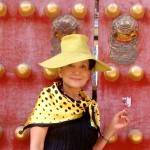
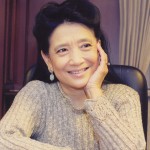





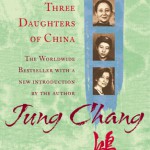
























![Army training as an undergraduate at Sichuan University (back row, second from right). The Chinese characters read 'Fish-Water Link [a slogan describing the relationship between the army and the people], English Class I, Foreign Languages Department, Sichuan University, 27 November 1974.'](http://www.jungchang.net/wp-content/uploads/2015/12/pic25-150x150.jpg)
